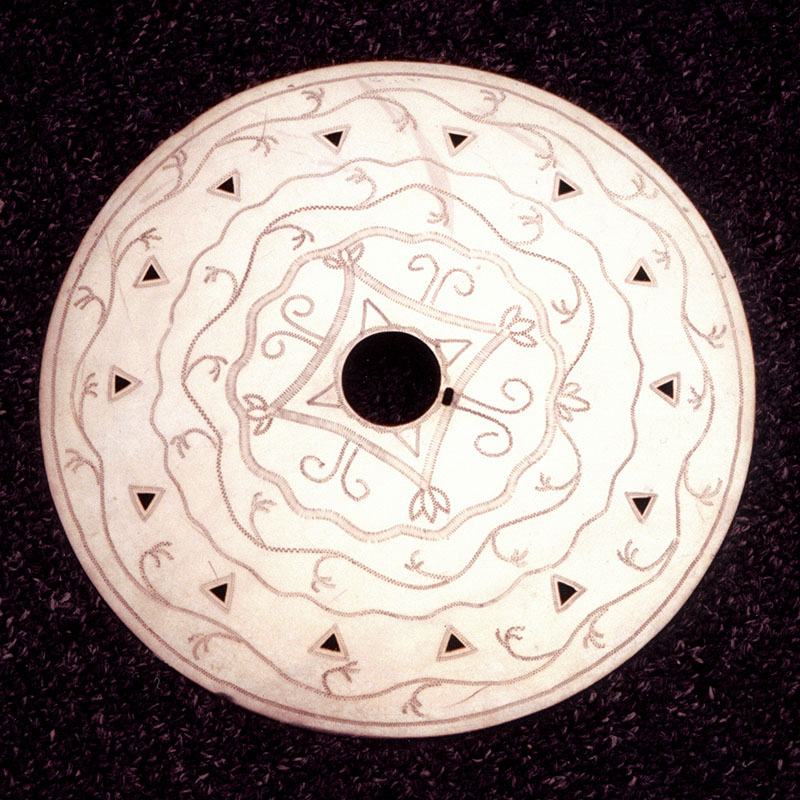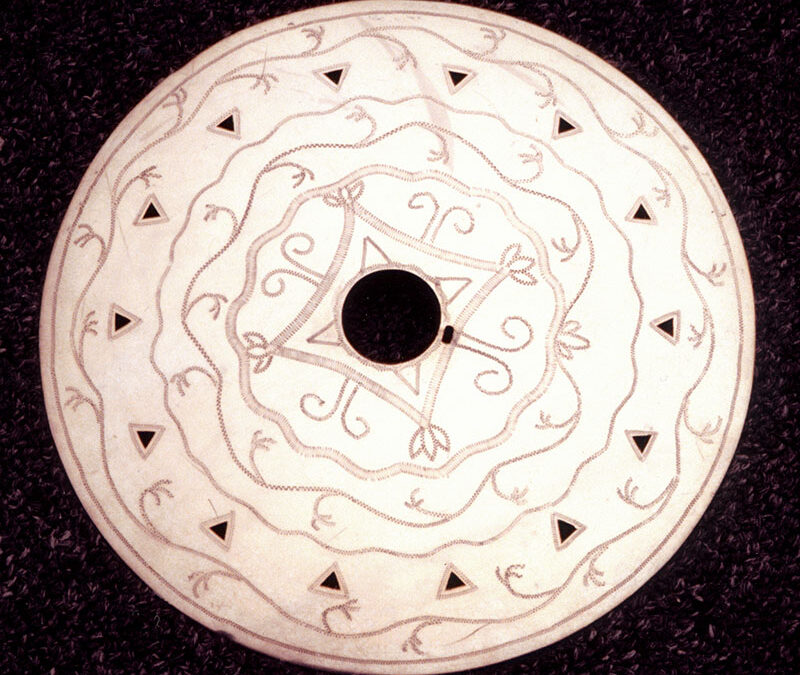Gorget/Trade Brooch

| Maker | Artist once known |
| Date of Creation | c. 1780 |
| Location | Made in Montreal, Canada; Used in Old Town, Maine |
| Materials | Silver alloy |
| Institution | Maine Historical Society |
| Credit Line | Collections of Maine Historical Society, MaineMemory.Net #6657 |
| Accession Number | 2420* #3 |
| Photo Credit | Maine Historical Society |
Wabanaki people started wearing silver trade brooches in the 1600s, replacing other adornment, such as seashells, inscribed stonework, and birch-bark engraved brooches. Wabanaki includes the Maliseet, Mi’kmaq, Passamaquoddy, Penobscot, and Abenaki Nations, who have inhabited what is now northern New England, the Canadian Maritimes, and Quebec for at least 13,000 years, according to the archaeological record. Silver trade brooches, also called “gorgets,” are objects of status and power for Wabanaki people, worn by both men and women and passed down through generations. Wabanaki artists created silver brooches, but more often non-Native silversmiths made them, and government officials presented the brooches to Indigenous leaders as diplomatic gifts and gestures of goodwill. This practice followed Wabanaki traditions of reciprocity associated with wampum exchanges.
Created in Montreal, Canada, during the American Revolution, this trade brooch tells the story of competing French, British, and American politicians who curried favor with Wabanaki Nations for centuries. In 1780, Wabanaki peoples retained control of the majority of Maine and the Canadian Maritimes while America was a foundling nation. George Washington understood that victory against the British meant making allies of the Wabanaki Nations and sent written requests to the Mi’kmaq and Passamaqoddy. After a century of negotiating between the English and the French, the Wabanaki were understandably wary, especially since any border between America and Canada (whether under French or British rule) was an imaginary line that crossed and separated Wabanaki Homelands. A secondary market trading in silver ornaments arose, with hatbands and crosses joining brooches and armbands. This piece came from the family of James A. Purinton, a White Indian Agent to the Penobscot Nation at Old Town, ME, between 1860 and 1864.

